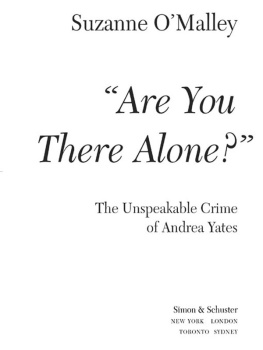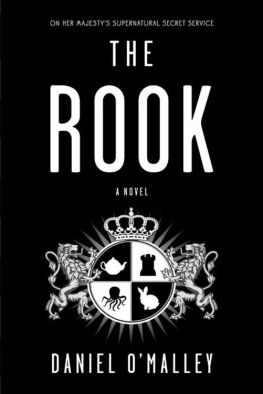crime and risk
compact criminology
Series editors: Nicole Rafter and Paul Rock
Compact Criminology is an exciting new series that invigorates and challenges the international field of criminology.
Books in the series are short, authoritative, innovative assessments of emerging issues in criminology and criminal justice offering critical, accessible introductions to important topics. They take a global rather than a narrowly national approach. Eminently readable and first-rate in quality, each book is written by a leading specialist.
Compact Criminology provides a new type of tool for teaching and research, one that is flexible and light on its feet. The series is designed to address fundamental needs in the growing and increasingly differentiated field of criminology.
Other Compact Criminology titles include:
Comparing Criminal Justice by David Nelken
Crime and Risk by Pat OMalley
Crime and Terrorism by Peter Grabosky and Michael Stohl
Experimental Criminology by Lawrence Sherman
Compact Criminology International Advisory Board:
Jan van Dijk, Tilburg University
Peter Grabosky, Australian National University
Kelly Hannah-Moffat, University of Toronto
John Laub, University of Maryland
Alison Liebling, University of Cambridge
crime and risk
Pat OMalley
Pat OMalley 2010
First published 2010
Apart from any fair dealing for the purposes of research or private study, or criticism or review, as permitted under the Copyright, Designs and Patents Act, 1988, this publication may be reproduced, stored or transmitted in any form, or by any means, only with the prior permission in writing of the publishers, or in the case of reprographic reproduction, in accordance with the terms of licences issued by the Copyright Licensing Agency. Enquiries concerning reproduction outside those terms should be sent to the publishers.
SAGE Publications Ltd
1 Olivers Yard
55 City Road
London EC1Y 1SP
SAGE Publications Inc.
2455 Teller Road
Thousand Oaks, California 91320
SAGE Publications India Pvt Ltd
B 1/I 1 Mohan Cooperative Industrial Area
Mathura Road, New Delhi 110 044
India
SAGE Publications Asia-Pacific Pte Ltd
33 Pekin Street #02-01
Far East Square
Singapore 048763
Library of Congress Control Number 2009938436
British Library Cataloguing in Publication data
A catalogue record for this book is available from the British Library
ISBN 978-1-84787-350-7
ISBN 978-1-84787-351-4
Typeset by C&M Digitals (P) Ltd, Chennai, India
Printed by CPI Antony Rowe, Chippenham, Wiltshire
Printed on paper from sustainable resources
contents
acknowledgements
I would like to thank the editors of this series, Nicole Rafter and Paul Rock, for their positive, insightful and exceptionally prompt comments on various drafts of this book. Caroline Porter of Sage Publications was a pleasure to work with and unfailingly supportive. Parts of the final chapter draw from an earlier paper Experiments in risk and criminal justice published in Theoretical Criminology 12(4). I would like to thank the editors and Sage Publications as publishers of this journal for allowing me this licence.
ONE
risk, crime and criminal justice
Risk and crime control
Beginning about the mid-1980s, criminologists began remarking on the ways in which the governance of crime from policing and crime prevention to sentencing and prison organization had moved away from a focus on reforming offenders toward preventing crime and managing behaviour using predictive techniques. Some noted that whereas the principal concern of twentieth-century penal modernism had been to understand and scientifically correct offenders, increasingly that was being abandoned in favour of focusing on managing their behaviours (Cohen 1985, Simon 1988). No-one was much interested anymore in the motives and meanings of these people. Instead what was at issue was what they did, how to control them, and how to minimize the harms they generated. Offenders and their offences were coming to be reframed less as the pathological products of societal and psychological breakdowns who needed to be therapeutically reformed, and more as bundles of harmful behaviours and potentialities.
At the same time, other criminologists observed that new techniques and new concerns were emerging in crime control. Reflecting the focus on behaviours, they detected a new emphasis on shaping the environment, and especially the built environment, in order to make crime difficult or impossible (Shearing and Stenning 1985, Reichman 1986). Increasingly, crime was seen as a matter of people taking opportunities rather than in terms of their inappropriate attitudes or disadvantaged backgrounds. Crime prevention accordingly was moving away from building up supportive environments and improving economically deprived neighbourhoods. The new focus was increasingly on designing crime-proof buildings, crime-preventing streetscapes and communities. As David Garland (1996) was later to term it, interest was focused on criminogenic situations. Reducing the risk of crime by restricting criminal opportunities had become critical.
There were other, linked changes also being reported. Penal modernism the optimistic correctional approach that deployed scientific knowledge in order to reform offenders was vitally interested in offenders pasts in order that they could be understood as individuals. The emerging risk techniques in crime control were also interested in offenders pasts, but in a different way. Emerging techniques tended to use statistical methods to identify correlations between pre-existing conditions and criminal action and to treat these conditions as risk factors. These factors could be used especially to identify potential offenders and change their ways before they offended, rather than correcting them after offending. Furthermore, what was now of interest was to use such information to assign individuals to a certain risk pool: it was this risk-categorization rather than the unique individual that was of interest.
This had been a phenomenally successful model in the medical sciences, of course. By the 1970s it was already the case that all manner of afflictions could be detected in advance by the presence of certain risk factors such as fatty diet and sedentary lifestyle, a family history of certain cancers or heart disease and so on. By modifying our diet and lifestyle, taking drugs or in extreme cases undergoing precautionary surgery, those of us identified as at risk may ward off some dreaded cancer or debilitating disease. Over the last half century, almost every aspect of our lives has been affected by this ascendant risk model of government. The design of cars, planes, roads, buildings and household equipment; the shaping of our bodies both inside and out; the production and consumption of food and clothing; patterns of saving and investment; education and training all these and more are now governed by risk. And why not? Who would not wish to reduce their exposure to disease, injury, loss or premature death? Who would not want to mitigate financial harms through some form of insurance? Perhaps it is not surprising that, sooner or later, crime would come to be approached in the same way. In fact its surprising that risk management techniques came to crime control so late in the piece, for contiguous fields such as fire prevention had been developed on similar principles almost a century earlier.










